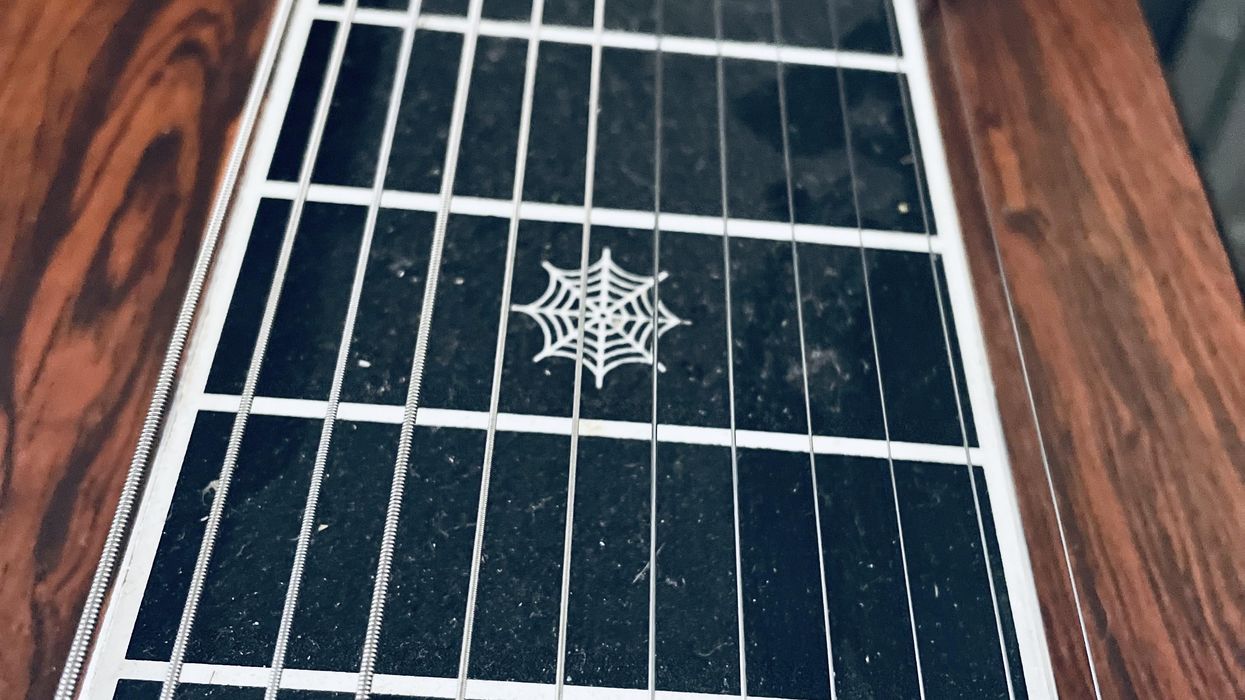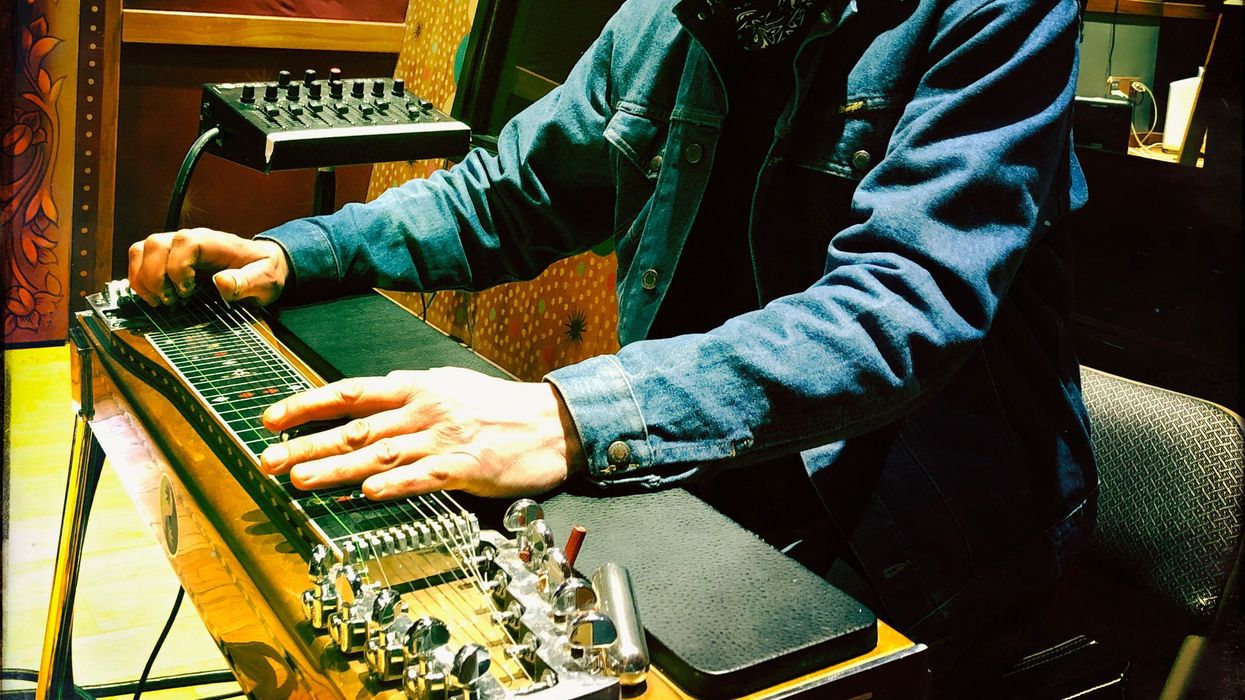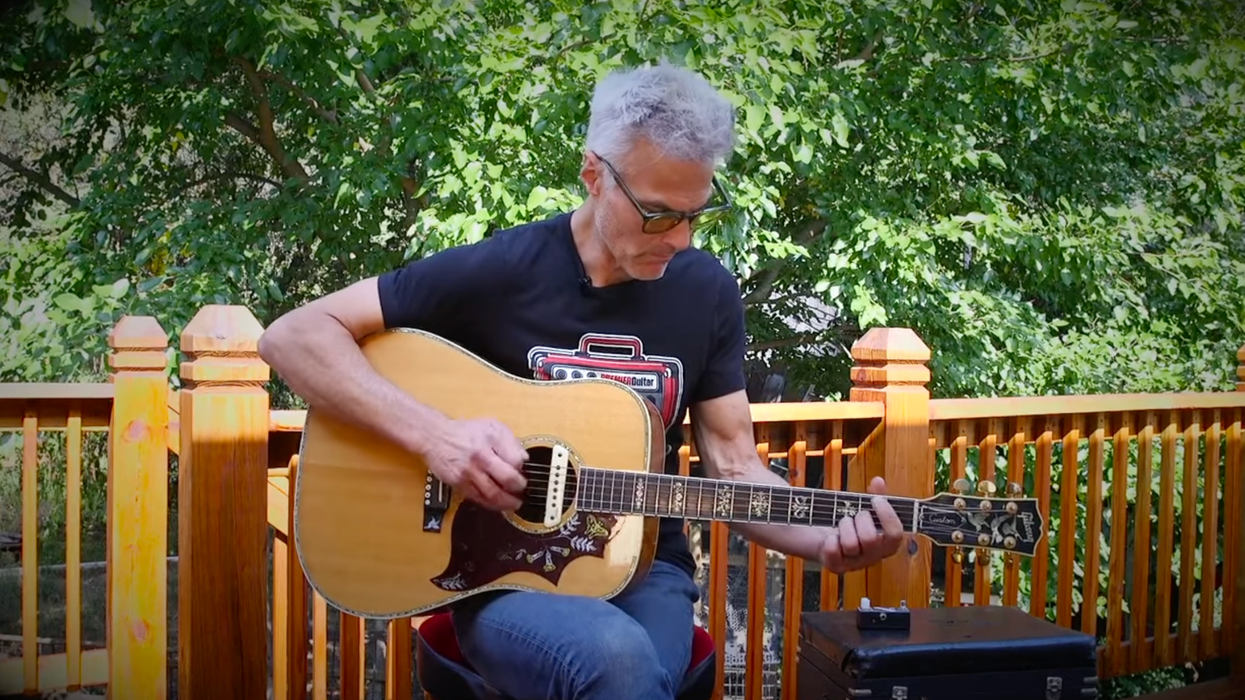Every now and then, a misguided guitar player asks me something like: “What should I do to become a better guitar player?” For the record, I’m probably not the one to ask. I suspect I don’t really know what I’m doing in guitar or life, but I love to play music, and I’ve noticed some improvement in my playing over the years, so here goes. A surefire way to get past a plateau and become a better player is to stop playing guitar … then dive deep into a different instrument.
You probably remember the agony of making an F chord, and later a barre chord, thinking your fingers just could not do it. Eventually you get it, then jump over the next hurdle, be it learning the pentatonic box, etc., until eventually, you notice that what you’re playing sounds like music. We make improvements quickly on the journey from beginner to intermediate, and before you know it, you can jam with others and pick up enough licks and tricks where you sound like a guitar player. But eventually we hit a plateau where we quit advancing and that’s where most of us stop. I suspect we plateau because humans love patterns, and once you’re in a pattern, it’s hard to see beyond it.
Humans can’t help but look for patterns. Our neocortex (the outermost layer of the brain found only in mammals) gives us our ability to recognize patterns, and we do it well. Although computer algorithms can spot patterns, no algorithm can outperform the human mind. Our body feeds our pattern addiction by giving us a fun hit of dopamine when we recognize one.
How do you break the pattern of patterns? You have to shift from thinking about patterns to melodies. This has made me a lot freer in my note choices on guitar, and it’s made me a bit more forgiving with myself.
Neil deGrasse Tyson explains: “Over centuries of evolution, humans’ pattern recognition skills determined natural selection. Hunters skilled at spotting prey and predator and telling poisonous plants from healthy ones offered them a better chance of survival than those blind to the patterns. It enabled the survivors to pass on those pattern-friendly genes to future generations.”
Learning guitar is learning chord, scale, and riff patterns. For most of us, the guitar neck becomes a series of patterns rather than an opportunity for melodies. The more you play, the more diverse your bag of patterns becomes, so you have more to shoehorn into any situation. Ultimately, they’re still patterns. How do you break the pattern of patterns? You have to shift from thinking about patterns to melodies. When you attempt to play an instrument where you know no patterns, all you can do is search for melodies.
I’ve loved pedal steel since I first noticed it on Elton John’s “Tiny Dancer,” but it’s such a complex, baffling, and expensive instrument that I never considered jumping in. As I aged and watched working guitarists get younger, I noticed that steel players remained mostly old crusty dudes. When I realized steel could extend my career, I was motivated to buy one. I’m glad I did, as this is one of the few times I made a prediction that was dead on. Pedal steel has opened a ton of gig opportunities, but it’s also expanded my concept of music and done more to improve my guitar playing than another 10,000 hours of just guitar.
When you dive deep into another instrument, you’ll find yourself approaching it more naively, like a kid, not looking for patterns but rather discovering what music will fall out of the instrument. There will be lots of surprises where you don’t know what note you’re going to get. Look at it like Bob Ross—those weird notes are just happy little trees. Those happy accidents have led me to playing much more interesting parts than if it went as I planned. This has made me a lot freer in my note choices on guitar, and I’m a bit more forgiving with myself.
When you start exploring technique on a new instrument, you can’t help but reevaluate how you play guitar. For instance, muting or blocking is wildly important on pedal steel, because if you don’t mute, you’ll have a constant discord of a b7, major 7 ringing over everything. It’s a cacophony. So, when I got back on a 6-string, I noticed where my slop was ringing and how some palm muting, like on pedal steel, makes my notes clearer. I’ve always muted, but now I’m listening closer, realizing when I need to apply more or less. Similarly, playing pedal steel with my fingers (fingerpicks) has made me less dependent on a flatpick when I play guitar. Although I’ve always used hybrid picking on guitar, I now use my fingers more and do more blocking with my fingers on guitar. It sounds smoother, cleaner, and seems to flow better.
Life doesn’t have to be the same old thing. Try something totally new and see how it makes you see everything in a new light.







![Devon Eisenbarger [Katy Perry] Rig Rundown](https://www.premierguitar.com/media-library/youtube.jpg?id=61774583&width=1245&height=700&quality=70&coordinates=0%2C0%2C0%2C0)








